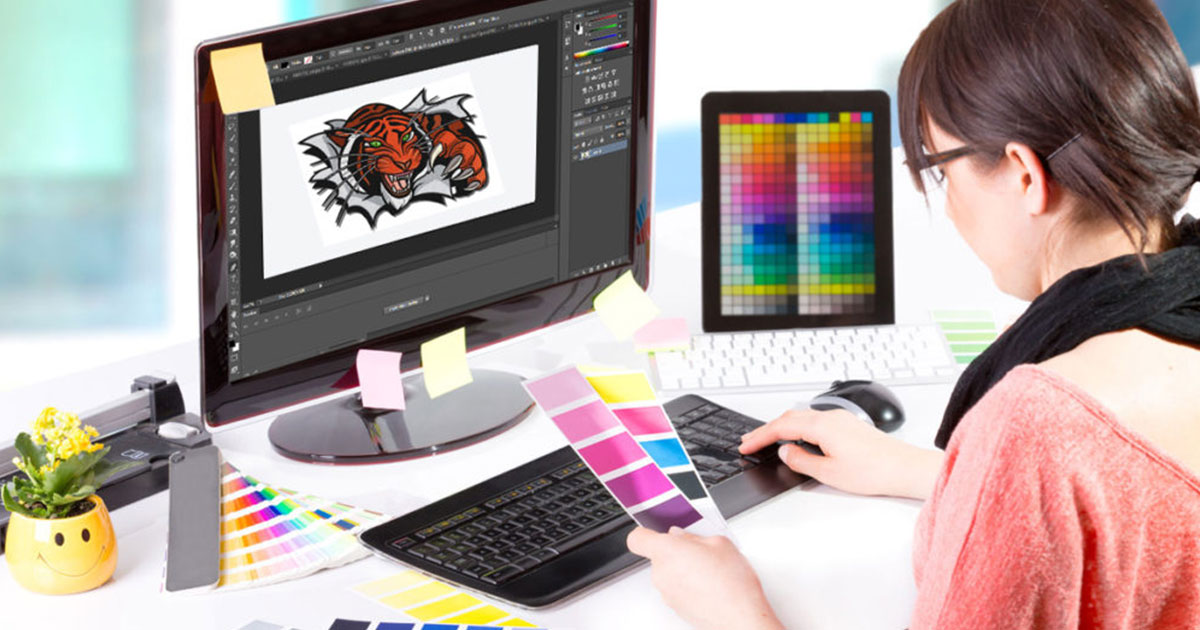Top-Rated Digitizing for Embroidery: Perfect Stitch Every Time
Top-Rated Digitizing for Embroidery: Perfect Stitch Every Time
Blog Article
Simplifying the Art of Needlework Digitizing: Step-by-Step Overview
Needlework digitizing is a thorough craft that demands precision and creativity. As innovation proceeds to advance, the digitization procedure has come to be more available, enabling enthusiasts to bring their intricate layouts to life easily. In this guide, we will certainly untangle the complexities of embroidery digitizing, damaging down each action systematically to enhance the process and equip both newbies and skilled embroiderers alike. Stay tuned to discover just how you can streamline this elaborate art kind and change your imaginative visions into magnificently stitched work of arts.
Comprehending Needlework Digitizing Software Program
Needlework digitizing software works as a vital device for transforming complex designs into digital styles compatible with needlework devices, facilitating accurate sewing and personalization. This specialized software enables customers to import numerous picture data styles, such as JPG or PNG, and transform them into embroidery machine-readable formats like DST, EXP, or PES - Digitizing for Embroidery. By utilizing attributes like stitch editing, padding alternatives, and string color choice, digitizing software program allows individuals to control every aspect of the style procedure
Furthermore, advanced embroidery digitizing software program supplies tools for developing complicated styles, adjusting stitch thickness, and incorporating intricate details. Individuals can additionally preview the layout prior to sewing it out, guaranteeing precision and decreasing mistakes. Furthermore, several software program programs supply automatic attributes that assist enhance the digitizing procedure, conserving effort and time.
Comprehending the capabilities of embroidery digitizing software program is important for accomplishing high-grade cause needlework tasks. By mastering this tool, needlework lovers and specialists can release their creativity and bring detailed styles to life with precision and effectiveness.

Picking the Right Layout Data
After acquainting on your own with the capabilities of needlework digitizing software program, the next essential action in the procedure is selecting the appropriate style apply for your task. Digitizing for Embroidery. When picking a design declare needlework digitizing, it's necessary to think about the complexity of the style, the size of the end product, and the sort of textile you will be collaborating with
For intricate layouts with great details, a high-resolution picture or vector file is recommended to make certain that the needlework machine can precisely recreate the design. Additionally, the dimension of the last item plays a substantial function in choosing the right layout documents. Larger styles might require greater resolution documents to keep quality and intensity.
Moreover, the sort of fabric you will be embroidering on affects the selection of design documents. Various fabrics might call for adjustments in the style file to ensure that the stitches are appropriately straightened and the style looks like planned. By carefully selecting the right design file based upon these variables, you can set yourself up for a successful needlework digitizing process.
Digitizing Devices and Methods
Using specialized software and precision strategies, digitizing tools are important in transforming complex styles into embroidery-ready files. Needlework digitizing software program, such as Wilcom, Hatch, or Embrilliance, provides the essential platform to transform artwork right into stitch information. These programs supply features like stitch editing and enhancing, rug options, and text tools to make certain the design converts perfectly onto textile.
Among the vital strategies in digitizing is creating a clear course for the embroidery machine to follow. This involves digitizing each component of the design with accuracy, figuring out stitch types, thickness, and directions. By making use of devices like digitizing tablets or software-specific plugins, embroiderers can accomplish a high level of precision in their digitized styles.
In addition, mastering the art of underlay sewing is crucial for creating top quality needlework. Underlay stitching stabilizes the fabric and produces a structure for the layout, guaranteeing that the final product is both visually attractive and resilient. By recognizing these digitizing devices and strategies, embroiderers can raise their craft and bring intricate layouts to life find this with accuracy and performance.
Customizing Stitch Types and Directions
Having established a foundation in digitizing devices and techniques, a crucial element beforehand embroidery craftsmanship depends on personalizing stitch types and instructions with precision and purpose. The option of stitch types can dramatically impact the overall look and structure of the embroidered design. Satin stitches, recognized for their smooth and shiny finish, work well for producing boundaries and message. On the other hand, fill stitches are suitable for covering larger locations effectively. By tactically combining these stitch kinds, embroiderers can accomplish depth and measurement in their styles.
Moreover, the instructions of stitches plays a crucial function in improving the aesthetic appeal of the final needlework. By trying out with different stitch angles and patterns, embroiderers can bring their designs to life with remarkable detail and complexity.
Screening and Refining Your Digitized Design
To make sure the accuracy and high quality of your digitized layout, thorough screening and improvement are vital action in the embroidery digitizing process. As soon as you have finished the digitization of your layout, it is vital to check it prior to waging the actual embroidery. Examining allows you to recognize any check this site out kind of possible problems such as thread breaks, stitch thickness issues, or layout distortions that may impact the result.

After testing, it is very important to refine your digitized layout based on the comments from the test sew-out. This may include tweaking stitch setups, adjusting thickness, or making modifications to the general layout to achieve the wanted result. By repeating with testing and improvement, you can tweak your digitized layout to excellence prior to progressing with the actual needlework procedure.
Conclusion
To conclude, grasping the art of embroidery digitizing needs an extensive understanding of the software application, selecting the best design data, utilizing digitizing devices and methods, customizing stitch kinds and instructions, and screening and improving the digitized design. By adhering to these steps, embroiderers can simplify the digitizing procedure and create top quality embroidered designs with precision and effectiveness.
Report this page